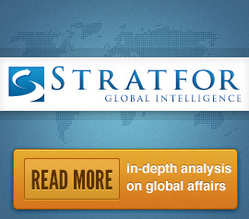Summary
Talk of renewed fighting in eastern Ukraine is escalating, as are the tactical movements fueling concerns. Negotiations remain troubled, and despite communications between Kiev, its Western backers, separatists and Russia, hostility remains. The political status of the separatist regions and Moscow's broader regional imperatives continue to prevent true tactical de-escalation on the battlefield. Though violence never really disappeared, even after several cease-fire agreements that included the withdrawal of weaponry, both sides now appear to be increasing their ability to conduct armed operations again. Stratfor still does not foresee Russia engaging in a large military operation in Ukraine. However, the current instability and higher concentration of forces on the demarcation line may rekindle fighting with limited offensive operations in the coming weeks.
Analysis
Over the past few days, Ukraine has signaled that it is increasing its retaliatory use of artillery fire against the pro-Russian separatist forces along the front line. The Minsk agreements initially required heavy artillery over calibers of 100 mm to withdraw from the demarcation line. While heavy artillery did withdraw for a time, activity by these artillery systems has steadily grown over the past few months. Ukraine's inability to enforce the withdrawal and its hesitation to settle the political status of the separatist regions have forced Kiev to move its artillery back to the front line and respond to continued cease-fire violations with its own firepower.

Following the Ukrainian announcement that the military would begin responding more consistently to incoming artillery fire and the movement of Ukrainian artillery pieces to the demarcation line, the Donetsk-based separatists similarly announced that they would once again amass their artillery on the front line. The artillery systems in separatist-held Donbas had previously been moved to warehouses away from the front line, but observers from the Organization for Security and Co-operation in Europe noted that these warehouses were empty months ago. Some extra artillery pieces may still be deployed, but the statements come after an increase in heavy weapons and fire along the demarcation line had already been observed over the past few months.
In a notable incident Aug. 12, separatists also fired larger-caliber Uragan-type rocket artillery at Ukrainian positions. Smaller-caliber rocket artillery had already reappeared on the separatist front, but the greater use of heavier Uragan-type rockets is notable; the ammunition used in these rocket launchers is scarcer than those of the smaller Grad rocket launchers. The continued use of these weapons systems would indicate Russia's support for (or at least approval of) such separatist operations.
Areas of Conflict
Looking ahead, there are several indicators of potential escalations along different sections of the front line. A large operation breaking out of the Donetsk and Luhansk areas is unlikely at this point, since no appropriately sized force has been visibly assembled yet. In the Donetsk and Luhansk areas, however, there are several hot spots where separatists or Ukrainian forces could attempt to achieve limited objectives in an effort to force the other side into a more accommodating position at the negotiating table.




